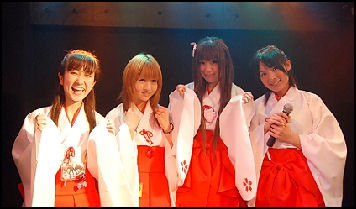


In his book Shooting Movies Without Shooting Yourself in the Foot: Becoming a Cinematographer, author Jack Anderson noted the challenges this created for filmmakers.Īnd while DVDs eventually appeared, greatly improving quality, it turned out that the idea of cloud-accessible karaoke proved the real disruptor in the country that first created the concept. (The Internet Archive, of course, has a giant collection of 'em.) The problem, as The Outline pointed out last year, was budgetary-while Pioneer had more money for film production than its many competitors, the budgets (around $6,000 a pop) were minuscule compared to traditional music videos. Oh well, the disc producers know that the video is just background for the real star-the karaoke singer. For instance, Steppenwolf's "Born to be Wild"-the "theme song" from Easy Rider-replaces the 1960's hippie/druggie bikers Dennis Hopper and Peter Fonda with a 1990's yuppie photojournalist who travels with his camcorder from continent to continent on his motorcycle. A 1991 review of a LaserKaraoke machine in Popular Electronics should sound familiar to anyone in the US who has performed karaoke in the last 25 years:Īlthough the video portions of the karaoke discs tend to have some relevance to the lyrics and spirit of the song, they'll seem amateurish to anyone who was raised on MTV-and some are downright funny. In some ways, the approach was truly innovative-thanks in no small part to the jukebox-style format of the karaoke discs.Ĭertainly, Laserdiscs had the capacity to be perfect for karaoke, but the challenge was the sheer size of the library the technology had to support. While the medium had shown signs of potential success, the company had to convince bars and restaurants to make a fairly expensive investment in technology that they might not necessarily use every night. The result was that it could be used more akin to a jukebox in format, with a single disc holding more than two dozen songs.Įventually, Pioneer brought LaserKaraoke to the US in 1988. Pioneer was well-suited to overtake this niche market for one specific reason: Its main competitors at the time, VHS and Betamax tapes, were linear in nature, but Laserdisc was chapter-based and random-access in nature, like a DVD.


The company launched a dedicated Laserdisc karaoke player in Japan in 1982, soon integrating digital sound, allowing it to overtake the country's market in just a few years. With its LaserDisc format and Japanese roots, Pioneer was in a stronger position than most to take advantage of the growing interest in karaoke.


 0 kommentar(er)
0 kommentar(er)
